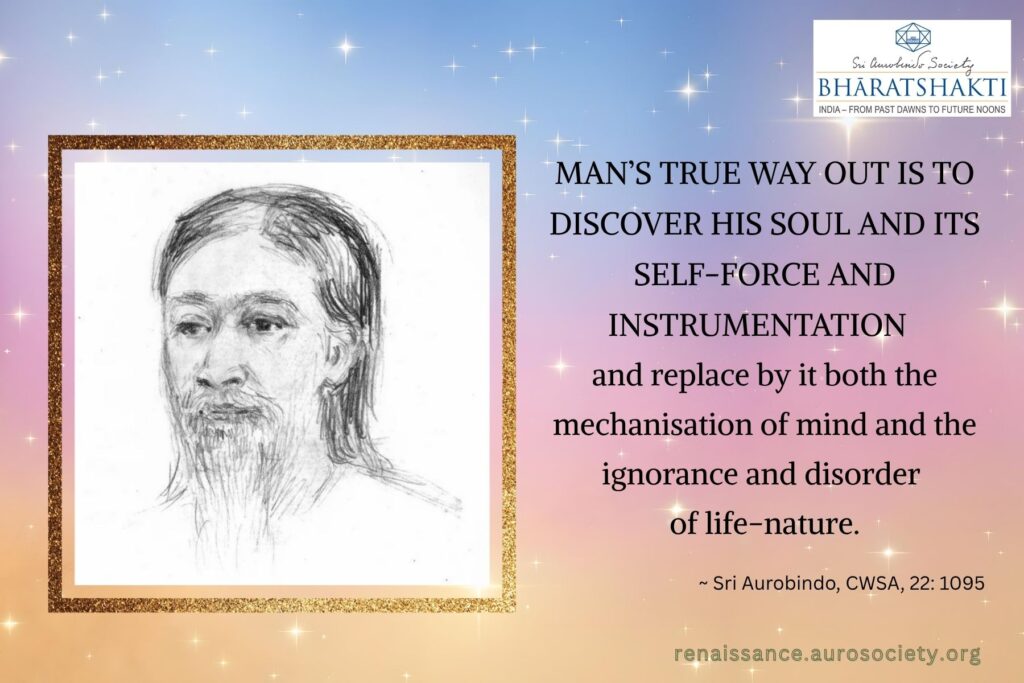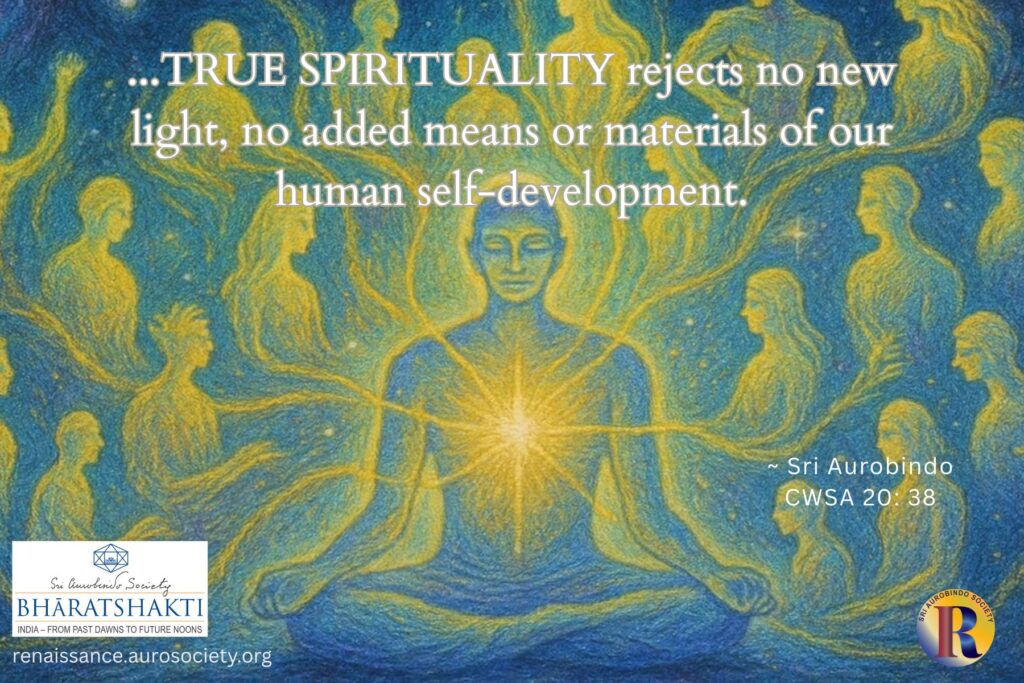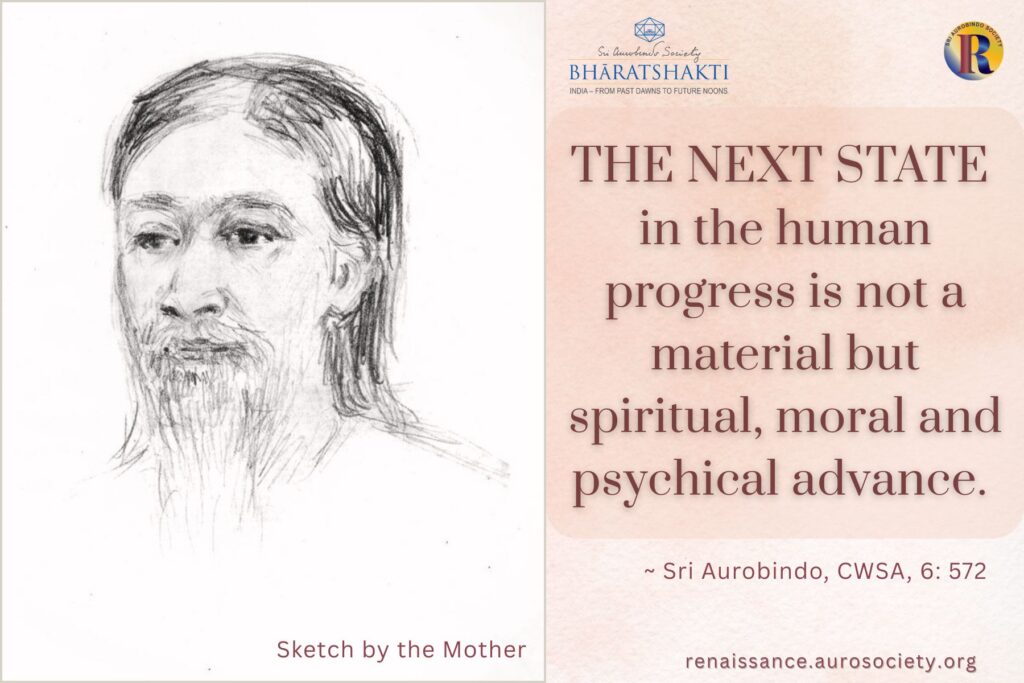Volume III, Issue 4
Author: Beloo Mehra
April is a special month. On April 4 in 1910, Sri Aurobindo arrived in Pondicherry, his “cave of tapasya”. And in 1920 on April 24th, the Mother arrived in Pondicherry to be always with Sri Aurobindo and collaborate in the Supramental Yoga. Their work was to bring down a new consciousness on the earth, which is the key to unlocking the evolutionary crisis facing humanity.
This new supramental, Truth-consciousness alone is capable of not only manifesting a new creation but has also accelerated the very pace of evolutionary process working behind the outer march of humanity and world.
In most of the old yogas, the aim has been to draw back altogether from life and enter into a greater divine Truth where one lives no longer in the mind and the ego, and grows into the inmost truth of one’s being above mind, life and body. But in Integral Yoga, “the aim is to transform mind, life and body into an expression of this divine Truth and to make the outward as well as the inward life embody it” (Sri Aurobindo, CWSA, Vol. 35, p. 728).
This is definitely a new turn and an inevitable culmination of the gradual unfolding of Divine Truth in manifestation.
Integral Yoga concerns itself not only with rising out of the ordinary ignorant world-consciousness into the divine consciousness, but also aims “to bring the supramental power of that divine consciousness down into the ignorance of mind, life and body, to transform them, to manifest the Divine here and create a divine life in Matter.” (Sri Aurobindo, CWSA, Vol. 29, p. 19)
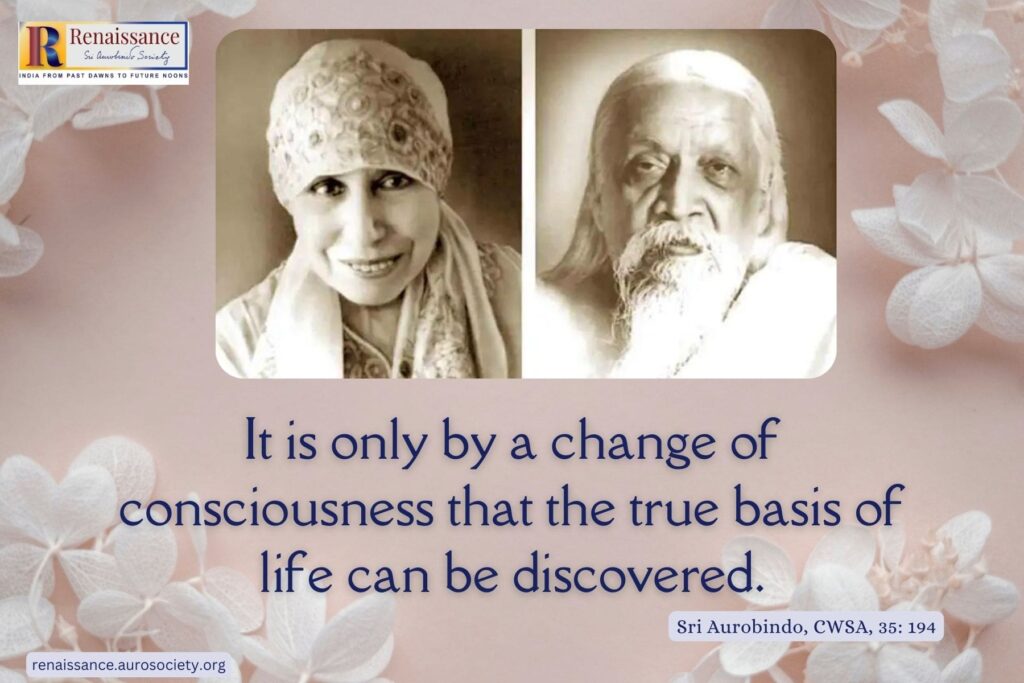
This change of consciousness, at the cosmic level, is about the change from Mind to Supermind as the founding principle of all creation, all manifestation.
The Gateway for the Next Future
On the evening of 29 February 1956, during a collective meditation with the Mother at the Ashram playground, a stupendous event happened which opened the gateway for the next future of the earth-consciousness. The manifestation of the Supramental in the earth consciousness was achieved.
On 24th July, 1957, the Mother described the significance of this great spiritual event as the beginning of a new world. She said that up to now, all that has manifested of the Divinity is the world, our present world as we know it. This is a mental world, and its apex and prototype is man – the mental being.
She added that the manifestation, however, is boundless, and after this mental world, another reality will manifest, which Sri Aurobindo calls the Supermind, because it is in fact the next step after the mind. So, when we see the new world from this standpoint of our present world, it is naturally “supramental”, that is, something above the mind. And she explained further:
“…so far the whole creation belonged to… “the lower hemisphere” …, which is governed by Ignorance and based upon the Inconscient, whereas the other one will be a complete reversal, … which instead of being based on Ignorance will be based upon Truth. That is why it will truly be a new world.”
~ CWM, Vol. 9, p. 158
Will this new world have anything to do with the old world as we know it? Will it be a transformed world out of the present world?
“But if the essence, the principle of this [new] world were not included in the world as we knew it, there would be no hope of the one being transformed into the other; they would be two worlds so totally different and opposed that there would be no contact between them…”
~ CWM, Vol. 9, p. 158
And she continued further…
“…in its essence and principle the new is already enclosed, involved in the old world. So, in fact, it is there, inside, in its very depths, hidden, invisible, imperceptible, unexpressed, but it is there, in its essence. Still, unless from the supreme heights the supramental consciousness and force and light manifest directly in the world, as it happened a year and a half ago, this Supermind which in principle is at the very bedrock of the material world as it is, would never have any possibility of manifesting itself.”
~ CWM, Vol. 9, p. 158
What we have here is a Divine declaration, a revelation of a stupendous inner movement in a progressive unfolding of the Truth.
The manifestation of a new supramental consciousness which has activated the principle of Supermind that was already hidden at the very base of the Matter is a decisive action direct from the Supreme. That is why the Mother said that the material nature has now become a willing collaborator to the call of the Spirit for transformation of Life.
Insights from Indian Tradition
In Indian tradition this union of Material Nature with the Divine Being has been symbolized in the divine marriage of Ma Parvati with Lord Shiva. As we know, the prequel to the story of Shiva and Parvati’s marriage is the story of Sati – Parvati in her former birth – who immolated herself because her father Daksha Prajapati who had organised a grand yajna for all the gods insulted Shiva by not inviting him.
After Sati is reborn as Uma Parvati – literally, the daughter of the Mountain, and hence symbolising Material Nature, she undertakes intense tapasyā to appease Shiva at that time had plunged into a deep trance. As the story proceeds, we meet other characters playing interesting roles such as Kamadeva, the god of vital love, and his consort Rati. But Shiva eventually emerges out of his trance and pleased with Parvati’s tapasyā, marries her.
Shiva, the masculine principle, is the Knowledge of the One Supreme, which becomes the Purusha, the Soul which sanctions and witnesses. Sati and Uma Parvati, the feminine principle, is the Shakti or Power of the One and hence, in essence, identified with the Supreme, but in manifestation has separated (or rather seems to be separated) and become material Nature, Prakriti.
Creation is the outcome of the dual dance of Purusha and Prakriti.
When the dance is in perfect rhythm, a harmonious and beautiful creation comes forth. But when out of rhythm, the result is chaos and destruction. We can understand the self-immolation of Sati as the sacrifice of the mind-born, ego-driven old consciousness, the result of a creation in avidyā or Ignorance. Now reborn as Parvati and through intense tapasyā, She has reclaimed all Her power. Her union with Shiva has opened the possibility of a New Creation, based on Truth. Shiva representing the Spirit and Parvati or Shakti representing Material Nature unite in a perfect and harmonious embrace.
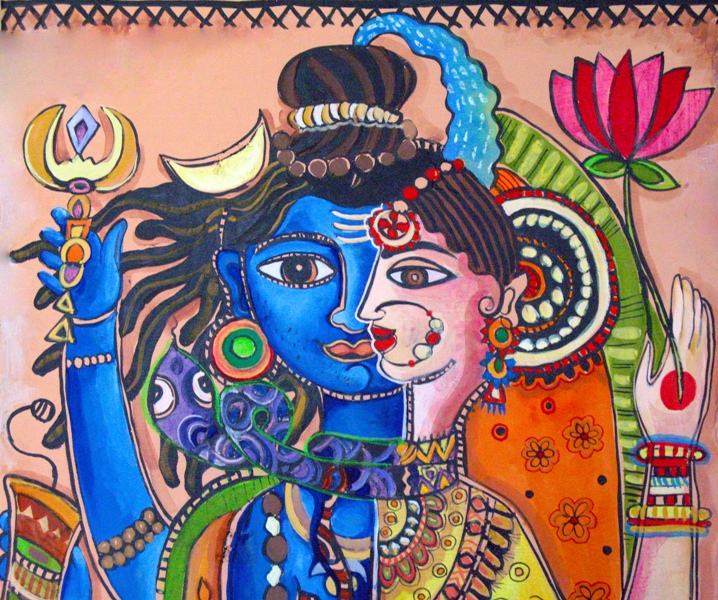
Watch:
The Mother and New Consciousness
In the Rigveda we find a legend of the Divine Shakti, the Consciousness of the Supreme, plunging down and hiding in the Inconscient. The gods slowly bring her back from there to re-unite with the Brahman.
The legend appears in Sūkta 109 of the tenth Mandala. Nolini Kanta Gupta had once narrated this story in a most delightful manner, revealing its deeper symbolism and significance. Titled as ‘The Bride of Brahman’, the story helps us understand the evolutionary march of Material Nature to re-unite with the Spirit, thereby opening the possibility of an entirely New Creation based on Truth-consciousness.
It is said that this separation and this reunion meant a greater fulfilment upon earth. Without the separation the fulfilment also would not have happened upon earth. Earth would have remained as it is but because of the separation, that is to say, the Bride of Brahman separating herself from her Lord and coming down into Matter and becoming one with Matter, there arose the possibility, the inevitability of fusing her reality and the reality of Brahman into Matter.
The Divine Bride dropped down on earth and dived into Matter and became one with it. She became Matter, material Nature, dense, dark, heavy with all its weight. She became as the Veda names her, “Bhimajaya” – the mighty, the terrible spouse – in fact our Mahakali. She was originally the fair spouse – Saumyajaya. But there is to be a progress, a gain.
So when she rises and is on her upward march she has now acquired the capacity to carry and lift with her the heaviest load of the Inconscient and gradually transmute it. In the final realisation all the Gods are to come to the forefront and all mankind are to come out, as it were, into the open and bask in the Solar Light and share in the delight of the union of the Divine Bride and her Bridegroom.”
~ Collected Works of Nolini Kanta Gupta, 7: 21-28
The ancient Tantric discipline had for its aim the mastery over the Power of Material Nature. It has found its apex and culmination in the descent of the Supramental Truth Consciousness which also has the power to transform material nature. And THAT is what makes all the difference. While the Tantra concerned itself with release from life, Supramental Yoga aims at transformation of life.
Such colossal work required the advent of the dual avatāra – of Ishwara and Shakti – on the earth. This is the real significance of the collaborative supramental yoga of Sri Aurobindo and the Mother. And of the Mother’s final coming to India on 24th April 1920.
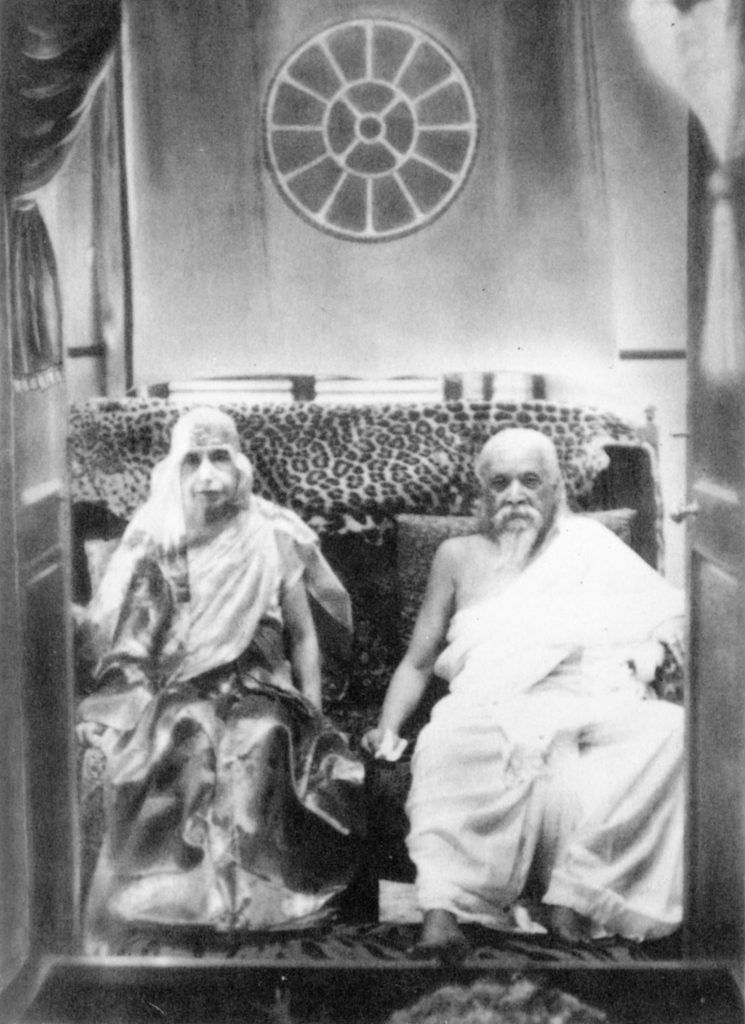
In one of the “Evening Talks” Sri Aurobindo spoke of the inner, truer nature of collaboration that was necessary in order for their Supramental Yogic work. When asked whether complete transformation is possible without having a Shakti, he noted something fundamental about the Mother’s yogic work:
The function of the Shakti is something special. In my own case it was a necessary condition for the work that I had to do. If I had had to do my own transformation only or give a new yoga or a new ideal to a select few people who came into personal contact with me I could have done that without having any Shakti.
But, for the work that I had to do, it was necessary that the two sides must come together. By the coming together of [the Mother] and me certain conditions are created which make it easy for you to do the transformation.
~ published in Mother India, April 1970
Offerings in this Issue
We have two offerings to mark these two special dates – April 4 and April 24. An essay by Nolini Kanta Gupta summarises the new future which Sri Aurobindo and the Mother brought down with their Supramental Yoga. Another one by M. P. Pandit gives a a peek into the Yogic work of the Mother and throws light on another important dimension to their supramental work.
Starting with August 2021, we have explored — briefly but in multiple dimensions — the first 8 attributes in the Mother’s symbol: Sincerity, Humility, Gratitude, Perseverance, Aspiration, Receptivity, Progress, and Courage. These eight, the Mother once said concern the attitude towards the Divine, and the next four – Goodness, Generosity, Peace and Equality – towards humanity. (Agenda, Vol. 13, p. 41)
In this issue, we take up Goodness. As always, we explore various dimensions of the significance of Goodness as a soul-quality for transforming inner and outer life at both the individual and collective levels.
See our Digital Exhibit:
The Mother on Goodness
The Guiding Light feature reminds us that winning victories over the weaknesses in our nature and by constantly aspiring for truth, harmony and universal goodwill is the best way to help others and do good for the world. A few commentaries of the Mother on selected verses from the Dhammapada help us explore further the true meaning of goodness.
We also feature some comments of the Mother on three aphorisms of Sri Aurobindo. These words reveal for us that because of our ignorance and egoism we find fault with others, call them sinners or other names. But when we become aware of the higher truth, we realise that such self-righteous behaviour is a real obstacle to cultivating and practicing goodness.
We often associate ‘Goodness’ with one’s moral-ethical development. A few selections from the chapter titled ‘The Suprarational Good‘ from ‘The Human Cycle’ help us understand the evolution of our ethical impulses from infrarational to rational to suprarational. A talk that the Mother gave in 1912 to a group of seekers in Paris where she speaks of the true and sublime charity is a must read.
Also see:
Sri Aurobindo on Morality and Yoga
We include a few letters of Sri Aurobindo explaining the core difference with between a moral life and spiritual life. The articles titled Of God, Universe, Good and Evil and Sri Aurobindo on the Principle of Evil answer a question many ask — if there is a God and if He is All-love, sarvamaṅgalam, why does He create evil or, if He does not create it, why permits it. In the Sādhanā feature, we highlight a prayer which reminds us to take refuge in Divine Love to transfigure our consciousness and manifest goodness.
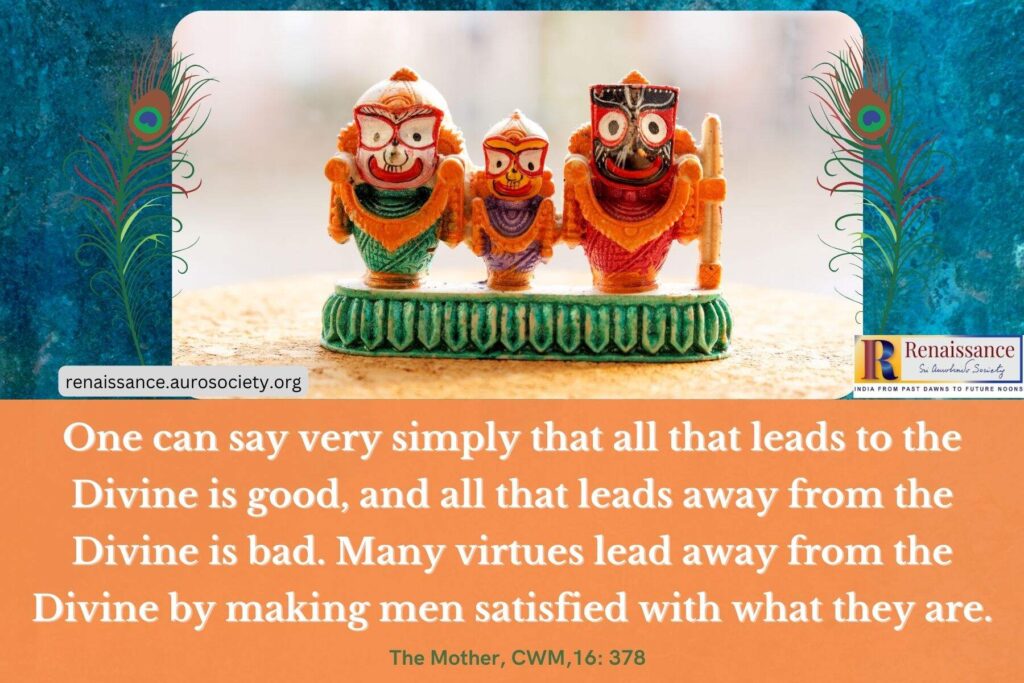
The treatises that give practical advice for individual and social well being, keeping in consideration the four pursuits of human life (purushārthas — dharma, artha, kāma and mokśa) are called Nītiśāstra. Because these texts also included a great deal of policy and worldly wisdom, they served as important resources for the education of princes, ministers and other people in leadership roles.
From the archives:
Ācāra, Vicāra, Viveka, Jñāna – Gems from Sri Aurobindo’s ‘Passing Thoughts’
Bhartrihari’s Nitishataka, hundred verses on nīti (a word which generally means right conduct, practice, propriety, guidance, etc.) is one such Nītiśāstra. Sri Aurobindo had rendered these verses freely into English; we feature a few here. We also include a write up by Kireet Joshi on Bhartrihari from his book titled “The Aim of Life,” written as part of a series to be used in teacher education programmes.
Readers will also enjoy a memoir by Shobha Mitra in which she shares how she once fell into the grip of jealousy, which was later dissolved by the Mother’s sweet blessings. The passage reveals that inner revolts such as anger and jealousy can be transformed into feelings of calm and goodness only when we call the Mother for help.
The Mother once said that animals feel a spontaneous gratitude for an act of kindness towards them. But men, ninety-eight times out of a hundred, begin to reason and ask themselves what interest one could have in being good. Two of our features in this ‘Goodness’ issue direct our attention toward our fellow living creatures from the animal world. Pranav Makhijani submits a short documentary about an animal rescue and organic farm. Shraddha Gour Mohanti summarises the right attitude of compassion, kindness and respect one must cultivate toward all living creatures.
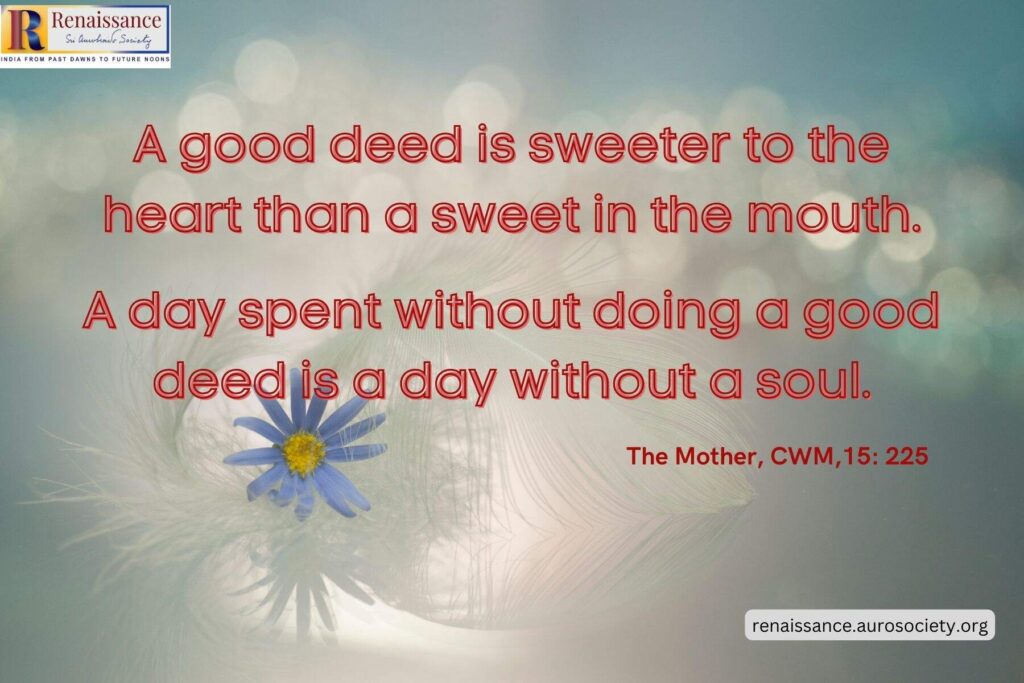
Also flip through this digital exhibit:
Sri Aurobindo and the Mother on Good and Evil
Sheeba Naaz in her flower-meditation speaks of the fragrance of the ‘goodness’ flower Sweet Alyssum, also known as Sweet Alison. Deepa Kiran, an award-winning storyteller of international repute and an experienced teacher-trainer in the art of storytelling shares about the power of storytelling in our Insightful Conversation.
We continue with part 2 of the biography of Major Somnath Sharma, written by Shyam Kumari of Sri Aurobindo Ashram. Rajeshwari in the ongoing health and wellness series tells us how walking or padayatra has been used traditionally and purposefully used in our culture with a deeper psychological or spiritual intent.
As always, we offer this work at the lotus feet of Sri Aurobindo and the Mother.
In gratitude,
Beloo Mehra (for Renaissance Editorial Team)

~ Design: Beloo Mehra

